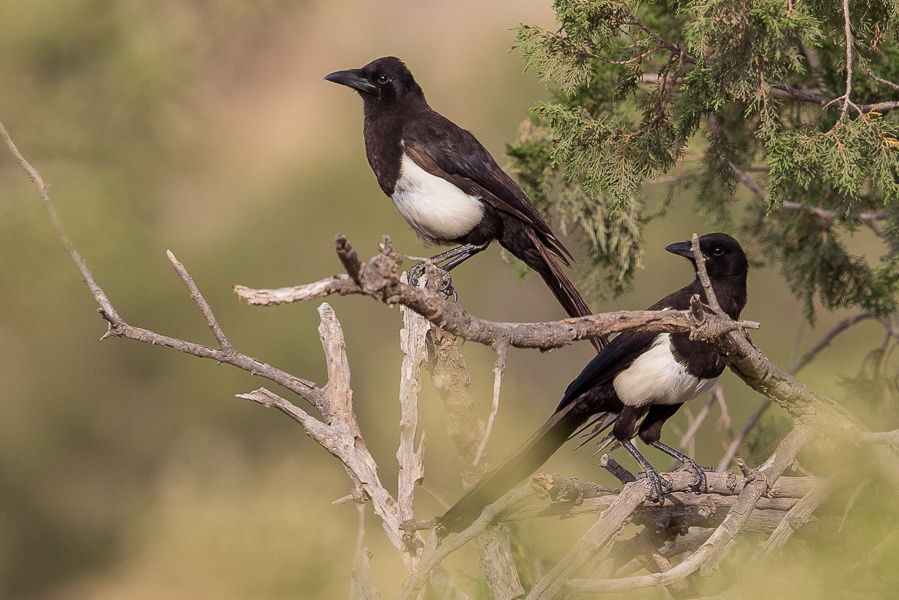The taxonomic position of Arabian Magpie Pica asirensis is certainly uncertain, although it is generally regarded as a subspecies of Eurasian Magpie. Gill & Donsker (2016) regard it as such, though there is a caveat “MtDNA phylogeny suggests that Eurasian Magpie comprises several potential species including Korean Magpie P. sericea, Mahgreb Magpie P. mauritanica and Asir Magpie P. asirensis”.
Recently, P. p. asirensis has been listed as a separate species P. asirensis forming a superspecies with P. pica, P. nuttalli and P. hudsonia. Isolation within a very restricted range and differences in vocalizations and structural features suggested that treatment as a separate monotypic species is warranted (Madge 2016, van den Berg 2014). Arabian Magpies are sedentary and localised and occur especially in the juniper forest zone, often in well vegetated upland valleys and wadis, of the Asir highlands 1850–3000 m asl.
Many of these areas are remote and difficult to access so the exact numbers of birds is difficult to assess but the estimated breeding population from the Atlas of Breeding birds of Arabia, has been noted as a minimum of 135 pairs and maximum 500 pairs.
Five surveys, February 1995–July 1996, resulted in a total of 147 sightings of 90 birds in the area between Taif and Abha, although all sightings were limited to the area of Abha and 120 kilometres north of same, as well as Jebel Gaha (Ebels 2003). P. asirensisis is a taxon with a very restricted range, confined to a small region within Saudi Arabia. Numbers are decreasing probably because of heavy disturbance by tourism and perhaps changes in climate with warmer and drier weather experienced in the Asir mountains in the last few decades.
The good rains in the region in spring 2016 coincided with an increase in sightings of birds. The areas where Arabian Magpies have been seen in recent years appear to be restricted to three widely spaced areas, one near Abha with numbers in significant decline, one on the isolated Jebal Gaha where numbers are very low and lastly the main stronghold in the Billasmar, Tanoumah and An Numas areas.
Estimating population size in this large and often inaccessible area is difficult, but the small number of recent records of Arabian Magpie and apparent reduction in its already very limited range suggests that the estimated population size of 135–500 pairs is probably too high. Numbers may be significantly less than this estimate with perhaps only 135 pairs or less.
The good news is that the species is still breeding in its core area at least, and is found in areas near human habitation, sometimes utilizing waste food.
Jem Babbington
Jem Babbington is a keen birder and amateur photographer located in Dhahran, Eastern Saudi Arabia where he goes birding every day. Jem was born in England and is a serious local patch and local area birder who has been birding for almost forty years and has birded in more than fifty countries. Jem is learning to ring birds in Bahrain as a perfect way to learn more about the birds of the area. Saudi Arabia is a very much under-watched and under-recorded country.


Leave a Reply